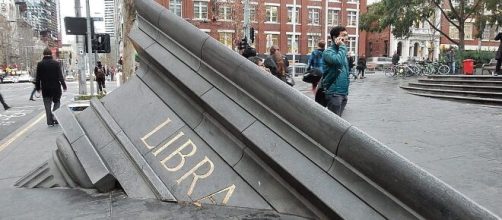A USA Today headline sounded the alarm last month this way: “Is America on the brink of tyranny? Trump's plan if elected in 2024 should frighten us all.”
Battle stations
Trump wants to purge the Justice Department, the FBI, and the Pentagon, taking out all civil servants for his cronies. In effect, he wants to replace the rule of law with revenge politics.
What are we doing about this threat? Consider the doings of the National Capital Planning Commission. Come next month, six new monuments will stand on the D.C. Mall in a public art initiative called “Pulling Together.”
From all reports, it looks like the busiest park in America will fill with timid and tired totems of our lost history, such as the 50th anniversary of the March on Washington for Freedom in 1963.
We need another march
Between the loss of reproductive rights, voter suppression laws, and Trump’s scheme to revamp America, we’re in a seminal moment. We need statuary to speak to our time, not the 1960s.
And not the 1930s either. One of the artworks coming to the DC Mall is a statue of Marian Anderson leading people in song as she did in 1939 at the Lincoln Memorial. What was she singing about? D.C. was segregated at the time.
And why are we getting a patriotic sing-along when patriotism may soon mean pledging allegiance to Trump? Given these tribulations, this public art project is an embarrassment.
For the times we’re living in, we need statuary that compels people to come to a halt and take in what a lawless land run by a madman will mean for them.
Calling all provocateurs
Where are the avant-garde artists when we need them? You have to look outside the U.S. to find them. Consider a monument in Melbourne, Australia called “The Architectural Fragment” by Petrus Spronk.
What you see on a downtown city street is a half-buried section of the State Library of Victoria. Reports say it symbolizes the downfall of civilization. But you don’t need a report to tell you that.
Spronk made his sculpture look like a building sticking out of the pavement, sunk into oblivion like the Statue of Liberty in the final scene of the 1968 sci-fi film “Planet of the Apes.”
The look of a sunken Lady Liberty can hit harder than any statue of a famous singer leading us in song.
And “The Architectural Fragment” punches like that.
Poking up from Melbourne's sidewalk, “The Architectural Fragment” also conjures up a ruin from old Rome when the Empire fell because it failed to enforce the rule of law. Sprunk's sculpture tells you without a word about the transient nature of government.
Sprunk said he got his idea from Percy Shelley poem “Ozymandias,” an account of a traveler’s reaction to a statue of the pharaoh Ramses half-buried in the earth.
Art is not forever
Like the poem, Sprunk’s work speaks of how time can erase even great empires. At the base of his work, he added an inscription quoting from the poem: “My name is Ozymandias, King of Kings. Look on my work you Mighty, and despair.”
But “despair” doesn’t need to be the takeaway from this sculpture. “The Architectural Fragment” reminds us that if we take care of our institutions, we can stop time from ravaging them ahead of schedule.


